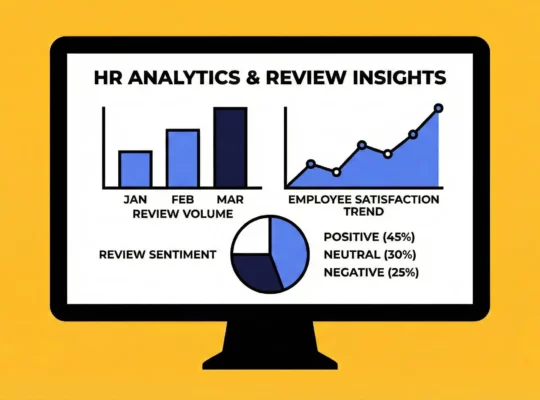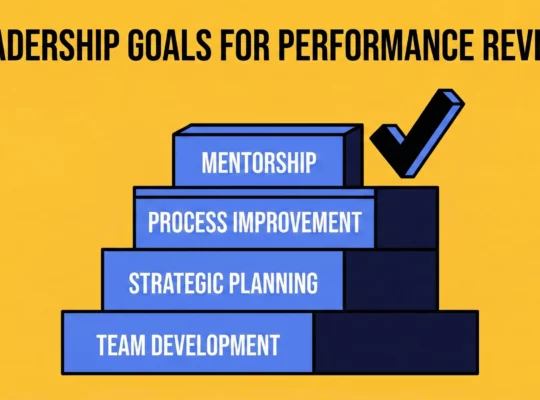Diversity sourcing strategy plays a pivotal role in enhancing workplace innovation, creativity, and overall performance. Companies that prioritize building diverse teams through effective sourcing practices not only boost their financial performance but also foster a more inclusive work environment. At Review.jobs, we believe that a well-structured diversity sourcing strategy benefits everyone in the organization, from employees to leadership. This guide will help you understand why it’s essential to implement such strategies and how to craft one that aligns with your company’s objectives.
- Why a Diversity Sourcing Strategy Matters
- Steps to Build an Effective Diversity Sourcing Strategy
- Innovative Sourcing Methods
- Leverage Employee Networks
- Use Technology to Optimize Diversity Sourcing
- Measuring and Improving Your Strategy
I. Why a Diversity Sourcing Strategy Matters
Implementing a diversity sourcing strategy is more than just a buzzword in the recruitment world—it’s a business imperative that drives long-term success. Companies with diverse teams tend to have a competitive edge, as they bring together a range of perspectives that contribute to better problem-solving, creativity, and overall performance.
Business Case for Diversity
Studies consistently show that diverse teams outperform their less diverse counterparts. By sourcing talent from various backgrounds, companies can improve their creativity and adaptability. Diverse candidates contribute unique viewpoints that can lead to innovative solutions for complex challenges, boosting the company’s problem-solving capabilities.
Impact on Employer Branding and Retention
A strong commitment to diversity not only improves external perceptions but also enhances employee satisfaction. Employees are more likely to stay with a company that values inclusivity, which reduces turnover and recruitment costs. Employer branding improves as the company becomes known for fostering an inclusive workplace, making it more attractive to top talent.
Aligning Diversity Goals with Business Objectives
A diversity sourcing strategy should align with broader business goals. It’s not just about filling quotas but integrating diversity, equity, and inclusion (DEI) principles into the company’s long-term vision. By doing so, you create a sustainable workforce that mirrors the diversity of your customer base and can drive better business outcomes.
II. Steps to Build an Effective Diversity Sourcing Strategy
Crafting a solid diversity sourcing strategy requires a thoughtful and structured approach. Here’s a step-by-step guide to help you implement one that works for your organization.
Step 1: Assess Your Current Hiring Practices
The first step in creating a robust strategy is understanding where you currently stand. Conducting a diversity sourcing audit helps identify gaps in your hiring process, including where you might be unintentionally excluding underrepresented groups.
Key actions include:
- Analyzing the demographics of your existing workforce.
- Reviewing recruitment pipelines to see where diverse candidates drop off.
- Assessing job descriptions for biased language.
Step 2: Expand Your Talent Pools
Broaden your sourcing strategies to ensure you reach a wide variety of candidates. Partner with institutions like Historically Black Colleges and Universities (HBCUs) and Hispanic-serving institutions to tap into underrepresented groups. Additionally, platforms like LinkedIn or specialized diversity-focused job boards are valuable tools for finding diverse talent.
Some effective platforms include:
- Professional organizations such as the National Society of Black Engineers.
- Employee Resource Groups (ERGs) that connect with candidates from diverse backgrounds.
- Community outreach programs that target underrepresented groups.
Step 3: Write Inclusive Job Descriptions
Inclusive job descriptions are a critical component of any diversity sourcing strategy. Remove gender-coded language and avoid listing an excessive number of qualifications. This encourages applications from a wider range of candidates, especially those who may not meet all the listed qualifications but possess the potential to excel.
Step 4: Reduce Unconscious Bias
One of the biggest challenges in the recruitment process is combating unconscious bias. Blind recruitment tools and AI-powered applicant tracking systems (ATS) can anonymize applications, ensuring that candidates are judged solely on their qualifications. Conduct unconscious bias training for all hiring managers to minimize bias during interviews.
III. Innovative Sourcing Methods
To stay ahead in the game, you must diversify your recruiting strategies and explore non-traditional sources of talent. Relying solely on conventional methods like job boards or referrals often leads to homogenous candidate pools, which can limit creativity and innovation in the workplace. Exploring new avenues for sourcing diverse talent not only broadens your reach but also ensures that you are capturing individuals from a variety of backgrounds, skill sets, and experiences. Here are three innovative methods to elevate your diversity sourcing strategy:
Career Fairs and Networking Events
Attending diversity-focused career fairs and networking events is one of the most effective ways to connect with diverse candidates. These events are tailored to underrepresented groups and often attract top talent in various industries. For example, AfroTech is a leading conference that connects African-American tech professionals with forward-thinking companies, while the Grace Hopper Celebration is the world’s largest gathering of women in computing. By sponsoring or attending such events, you can showcase your commitment to diversity and inclusion, positioning your company as a top destination for diverse talent.
Non-Traditional Talent Sources
Traditional sourcing methods often overlook talented individuals who do not follow conventional career paths, such as those without formal degrees or those with gaps in their employment history. By widening your scope, you can attract highly skilled individuals who bring unique perspectives to your organization. For instance, people with freelancing experience or those who have pursued trade school education often possess hands-on expertise and practical problem-solving skills that can be invaluable to a company’s growth.
Returnship Programs
Returnship programs are designed for individuals re-entering the workforce after extended breaks, typically for caregiving, parenting, or other personal reasons. These programs offer a structured path back into full-time work, allowing candidates to update their skills and acclimate to a professional environment after time away. This is a particularly valuable strategy for sourcing candidates from underrepresented groups, such as women who have taken time off for family reasons or veterans transitioning from military service.
IV. Leverage Employee Networks
Your current employees hold the key to unlocking a more diverse and successful talent pool. Here’s how to leverage their networks and experiences to achieve this:
Employee Resource Groups (ERGs): A Network of Champions
Employee Resource Groups (ERGs) are a goldmine for diversity sourcing. These employee-led groups connect individuals based on shared backgrounds or experiences. By partnering with ERGs, you can gain access to:
- Diverse Networks: ERGs offer a direct line to diverse talent pools that traditional sourcing methods might miss.
- Targeted Referrals: Encourage ERGs to spread the word about open positions within their networks. This leads to a higher likelihood of attracting qualified candidates from diverse backgrounds.
- Authentic Employee Advocacy: ERG members can act as authentic advocates for your company culture, fostering a sense of belonging for new hires.
Unlocking the Potential: Beyond Referrals
Employee networks offer more than just referrals. Consider these strategies to fully leverage their power:
- Mentorship Programs: Pair new diverse hires with experienced employees from ERGs to provide guidance and support during the onboarding process.
- Career Development Workshops: Collaborate with ERGs to host workshops on topics like resume writing or interview skills, specifically focused on supporting underrepresented talent.
- Employee Feedback Channels: Utilize platforms like Review.jobs to collect feedback from diverse employees on your company culture and talent acquisition practices. This allows you to identify areas for improvement and foster a truly inclusive environment.
Building a Culture of Inclusion: Retention Is Key
A diverse workforce is only valuable if you can effectively retain it, as turnover undermines the potential benefits of diversity. Retention becomes possible only when employees feel respected, valued, and supported within the organization. This is where fostering an inclusive company culture becomes crucial.
One of the most effective ways to monitor and enhance inclusion within your company is by regularly collecting anonymous feedback from employees. Platforms like Review.jobs provide tools to gauge employee sentiment through anonymous reviews and surveys. These insights can help identify potential issues related to inclusion, whether they be unconscious biases, gaps in communication, or unequal access to opportunities.
V. Use Technology to Optimize Diversity Sourcing
Incorporating technology into your diversity sourcing strategy can streamline the process, improve efficiency, and help you identify a wider pool of qualified candidates.
AI-Powered Sourcing Tools
- Expanded Reach: AI-powered sourcing tools can analyze resumes and profiles based on skills rather than background, helping you identify diverse talent that may be overlooked by traditional methods.
- Reduced Bias: These tools can help mitigate unconscious bias by focusing on objective qualifications and skills, ensuring a more equitable sourcing process.
- Enhanced Efficiency: AI can automate tasks like resume screening and candidate matching, saving time and resources.
Applicant Tracking Systems (ATS)
- Data-Driven Insights: ATS can track and report diversity metrics, providing valuable insights into your recruitment efforts and identifying areas for improvement.
- Improved Efficiency: ATS can automate many tasks, such as candidate communication and scheduling, streamlining the recruitment process.
- Enhanced Candidate Experience: A good ATS can provide a positive candidate experience by automating communication and keeping candidates informed about the status of their applications.
Additional Technology Tools
- Blind Recruitment Software: This software can mask candidate information, such as names and education, to reduce unconscious bias in the hiring process.
- Video Interviewing Platforms: Video interviewing can help reduce bias by focusing on candidates’ skills and qualifications rather than their appearance or location.
- Diversity Training Tools: Online tools can provide training and resources to help shape great recruiters and guide hiring managers to become more aware of unconscious bias and improve their diversity sourcing practices.
VI. Measuring and Improving Your Strategy
To ensure the effectiveness of your diversity sourcing strategy, it’s essential to track its progress and make necessary adjustments.
Conduct Regular Audits
- Comprehensive Review: Conduct regular audits of your hiring data to assess the progress of your diversity sourcing efforts.
- Identify Trends: Analyze hiring patterns to identify any bottlenecks or areas where your strategy may be falling short.
- Benchmarking: Compare your diversity metrics to industry benchmarks and best practices to assess your performance.
Set Clear Diversity Goals
- SMART Goals: Establish specific, measurable, achievable, relevant, and time-bound goals to track progress and measure success.
- Key Performance Indicators (KPIs): Define key performance indicators (KPIs) to monitor, such as the percentage of diverse candidates in the applicant pool, interview stage, and hires.
Collect and Analyze Data
- Leverage Data Analytics: Utilize data analytics tools to collect and analyze data on your diversity sourcing efforts.
- Identify Bottlenecks: Analyze data to pinpoint areas where your strategy may be falling short, such as unconscious bias in the application process or lack of diversity in your talent pool.
- Data-Driven Decision Making: Use insights from data analysis to inform your decisions and make necessary adjustments to your diversity sourcing strategy.
Additional Strategies
- Employee Feedback: Gather feedback from employees and candidates to identify areas for improvement and ensure a positive candidate experience.
- Partner with Diverse Organizations: Collaborate with organizations that focus on diversity and inclusion to expand your reach and attract a more diverse pool of candidates.
- Review Job Descriptions: Ensure that your job descriptions are inclusive and avoid language that could deter diverse candidates.
Mastering a diversity sourcing strategy requires intentional effort and a commitment to creating an inclusive recruitment process. By following these steps and continuously improving your approach, you can build a more diverse, innovative, and engaged workforce. As you refine your strategies, remember that Review.jobs is here to help you enhance your employer brand and ensure that every employee, regardless of background, has the opportunity to thrive.





